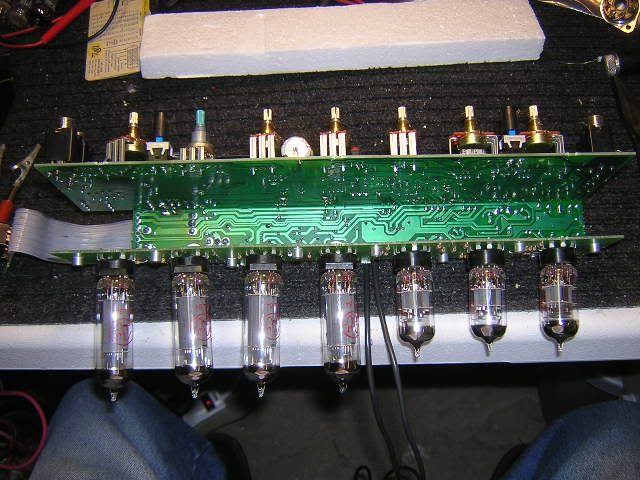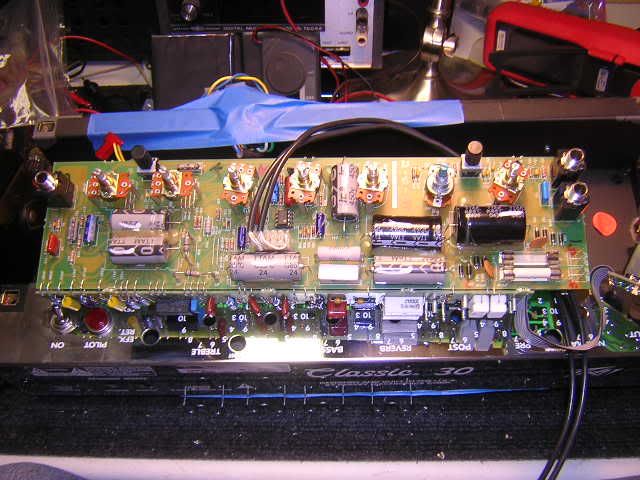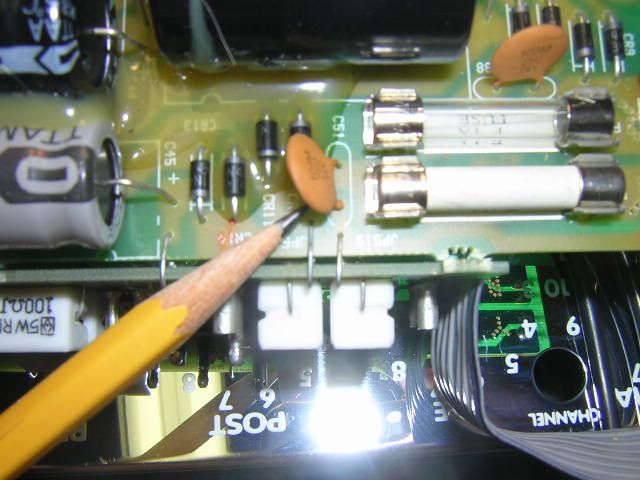My classic 30 for some reason is cutting out once the tubes heat up. It will turn on for about 10 Min. but once it gets hot the power to the tubes stops and no more sound. The power light is still on but none of the tubes are getting any juice. Any suggestions?
Ad Widget
Collapse
Announcement
Collapse
No announcement yet.
Peavey Classic 30 problem
Collapse
X
-
Welcome to the forum.
Did you try changing the tubes for new ones?
If that doesn't work, then if you are a total newb, you are best to take it to a tech. Those Classic 30s are real bass akward to work on.Building a better world (one tube amp at a time)
"I have never had to invoke a formula to fight oscillation in a guitar amp."- Enzo
-
they have problems with the filament string going on the fritz. I worked on one and I found that you have to be careful not to damage the ribbon connectors but other than that it was OK. sounded good when it was running right.Originally posted by tubeswell View PostWelcome to the forum.
Did you try changing the tubes for new ones?
If that doesn't work, then if you are a total newb, you are best to take it to a tech. Those Classic 30s are real bass akward to work on.
Comment
-
I've swapped some of the tubes out, haven't put a whole new set in though. It didn't seem like the tubes to me since they would run fine at first and then suddenly cut out. I did open it up to see if it was a cold solder joint, but the board is to awkwardly shaped for me to work on.
Comment
-
You have to be pretty careful with it but I was able to find a couple cold solder joints on the one I fixed. It requires a bit of disassembly and careful handling, plus a fair degree of patience. I had some styrofoam on the garage and cut blocks to support the chassis on the bench and limit the bending and stretching. The ribbon connectors are not the most robust things as I had reason to find out on a Maytag made refrigerator I fixed-it has a circuit board and ribbon connectors and I broke the old one flexing it.Originally posted by thebte View PostI've swapped some of the tubes out, haven't put a whole new set in though. It didn't seem like the tubes to me since they would run fine at first and then suddenly cut out. I did open it up to see if it was a cold solder joint, but the board is to awkwardly shaped for me to work on.


Here's a loose capacitor

Here's the cold solder joints behind it a little fuzzy.

Comment
-
There has always been a buzzing sound whenever I turned it on, although when the amp cuts out so does the sound. When I opened it up I found the sound was coming from around where the fuses are located. Just now I went in and tapped on the large square white capacitors under the orange drop in Prarie Dawgs last pic and the amp cut out. Now it wont work at all. I think I found my bad connection but I'm probably going to take it to someone. I think if I start to pull it apart in order to get to the board I will break something along the way.
Comment
-
I think you will find that those white square items are ceramic resistors and they seem to be troublesome and not only on the Classic 30-they are famous on the Blues Deville and Blues Deluxe for this kind of tomfoolery. If you decide to repair it yourself make sure and inspect carefully for burnt traces and damage around the resistors-they get hot.Originally posted by thebte View PostThere has always been a buzzing sound whenever I turned it on, although when the amp cuts out so does the sound. When I opened it up I found the sound was coming from around where the fuses are located. Just now I went in and tapped on the large square white capacitors under the orange drop in Prarie Dawgs last pic and the amp cut out. Now it wont work at all. I think I found my bad connection but I'm probably going to take it to someone. I think if I start to pull it apart in order to get to the board I will break something along the way.
Comment
Comment